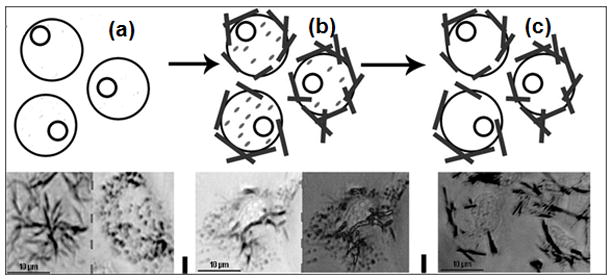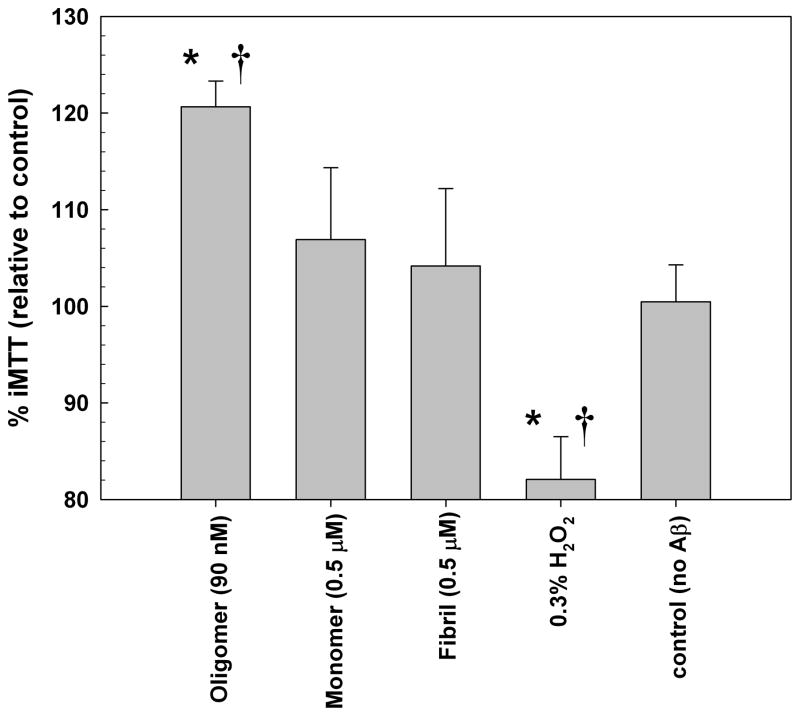Figure 2.

(A) Oligomeric Aβ Increases the Proportion of Tween 20-insoluble MTT Formazan in SH-SY5Y Neuroblastoma Cells. Two types of formazan are deposited: intracellular granules and extracellular needles. Cell surface (left) and intracellular (right) focal plane images are shown. Aβ oligomers induce increased formation of the Tween 20-insoluble needles; addition of Tween 20 solubilizes the granules, leaving behind the needle-like formazan. The supernatant is collected and the remaining formazan solubilized in DMSO. Thick lines = needles; dashes = granules. (a) untreated cells metabolizing MTT ; (b) cells treated with Aβ oligomers metabolizing MTT; (c) cells treated with Aβ oligomers metabolizing MTT after extraction with Tween 20. (B) Effect of Oligomeric, Fibrillar, and Monomeric Synthetic Aβ(1-42) Peptides on MTT Formazan Exocytosis from SH-SY5Y Neuroblastoma Cells. Oligomeric Aβ (90 nM) yields a distinct increase in the proportion of detergent insoluble MTT (iMTT) over normal baseline production (=100%). No detectable change from control proportions was seen with high concentrations (0.5 μM) of monomeric or fibrillar Aβ. Furthermore, the alteration by oligomeric Aβ is in a direction opposite of acute toxins such as hydrogen peroxide. Each bar represents ten replicates. Asterisk denotes significance from control (p<0.001) and dagger indicates significance from monomer/fibril (p<0.001).

